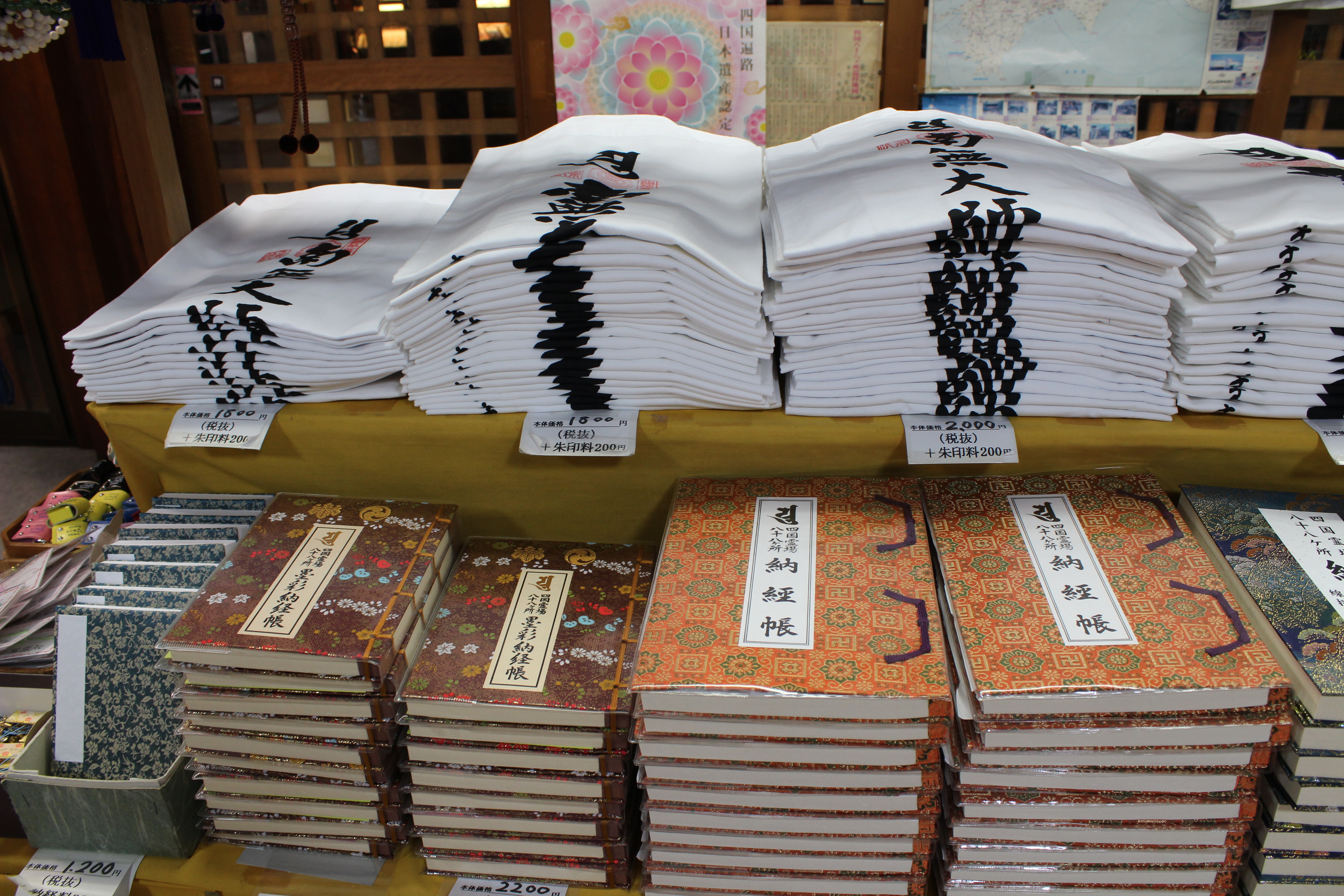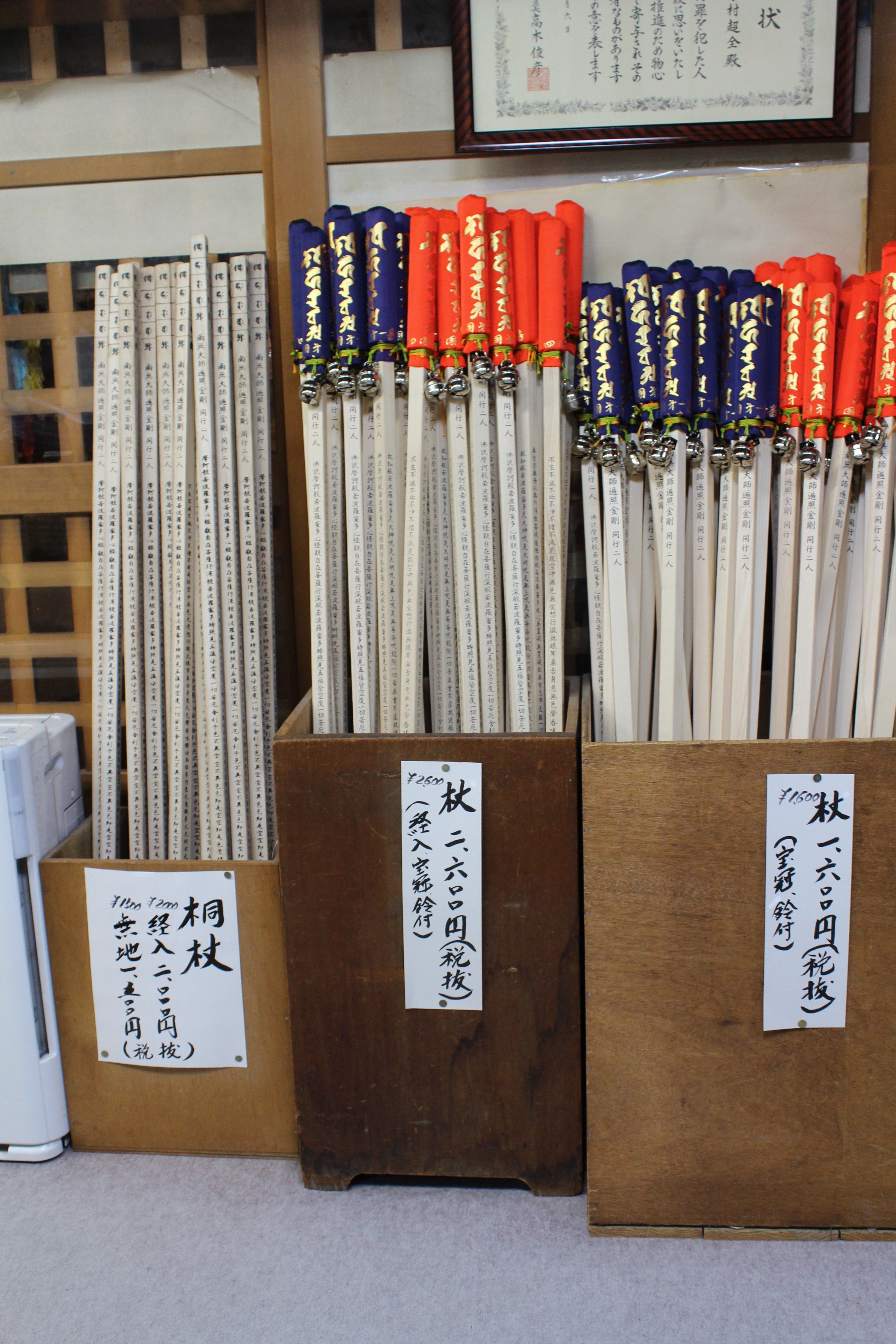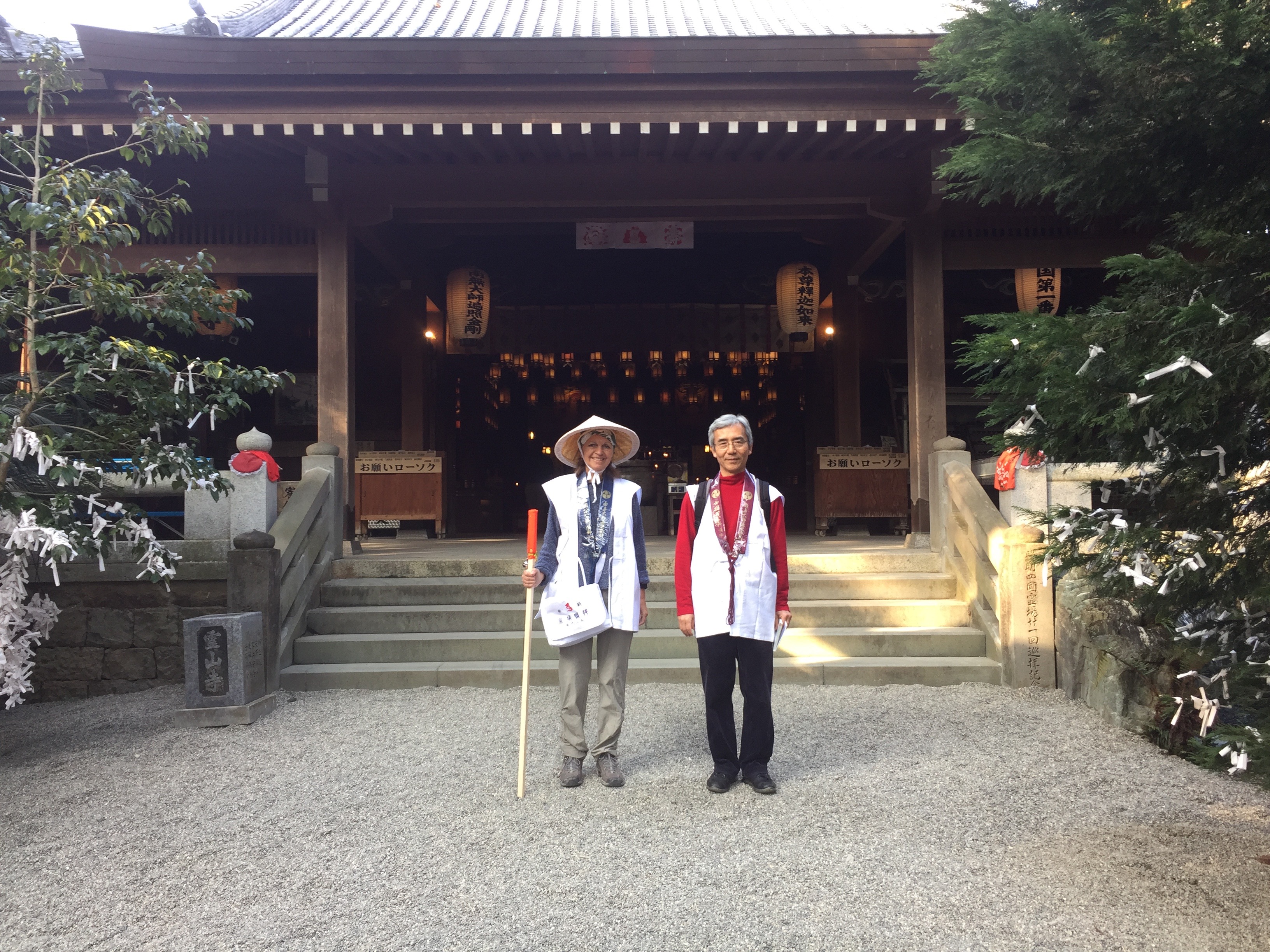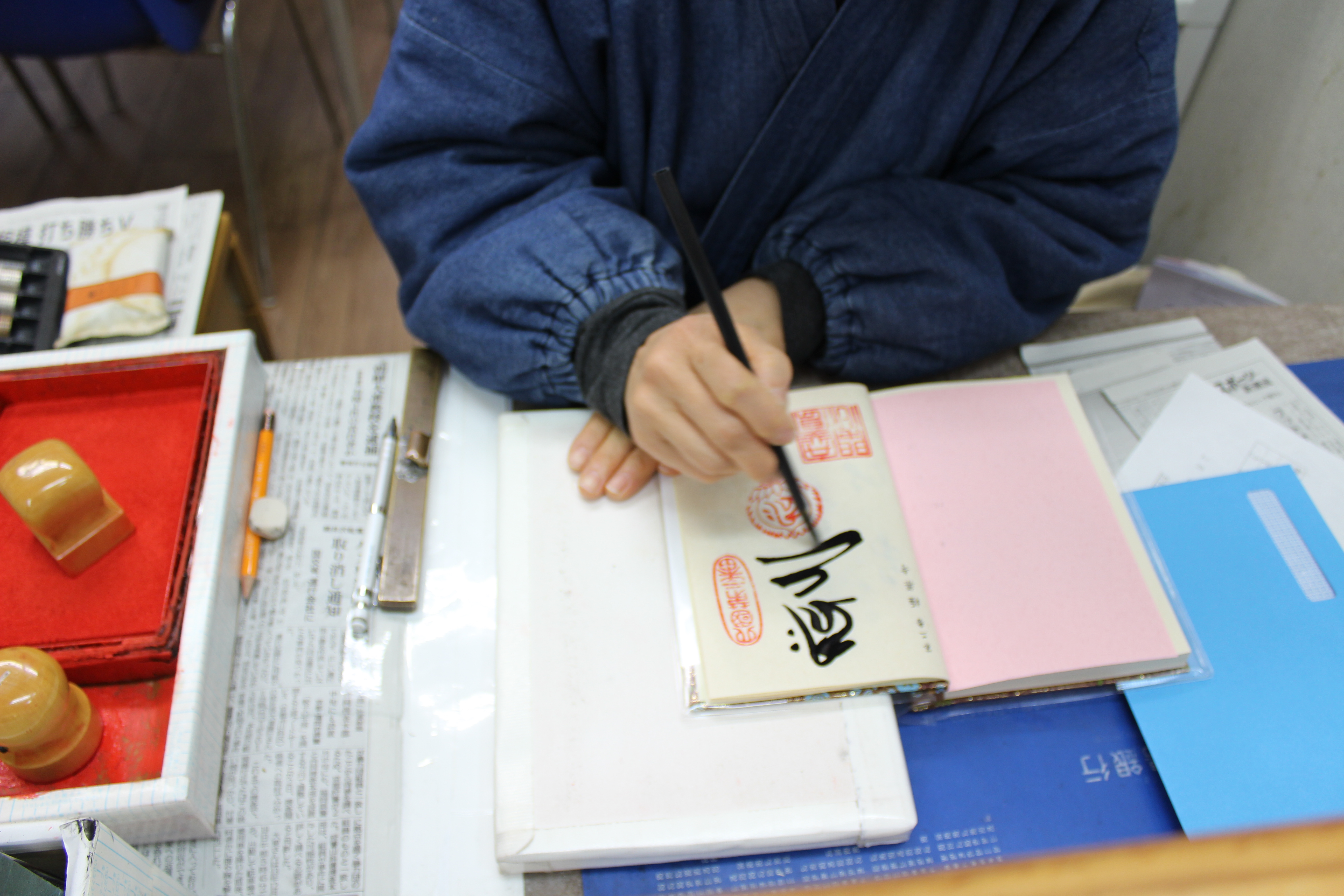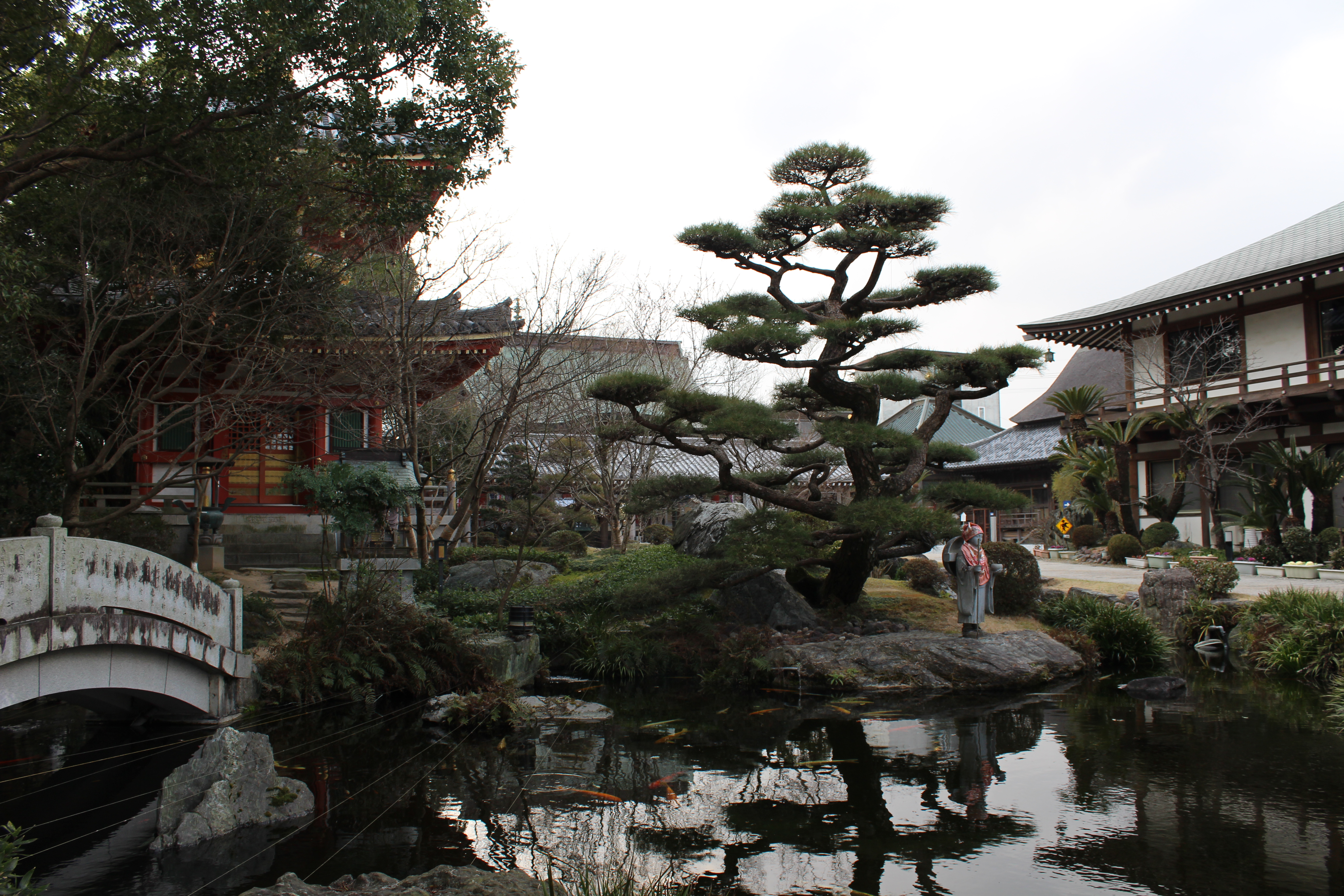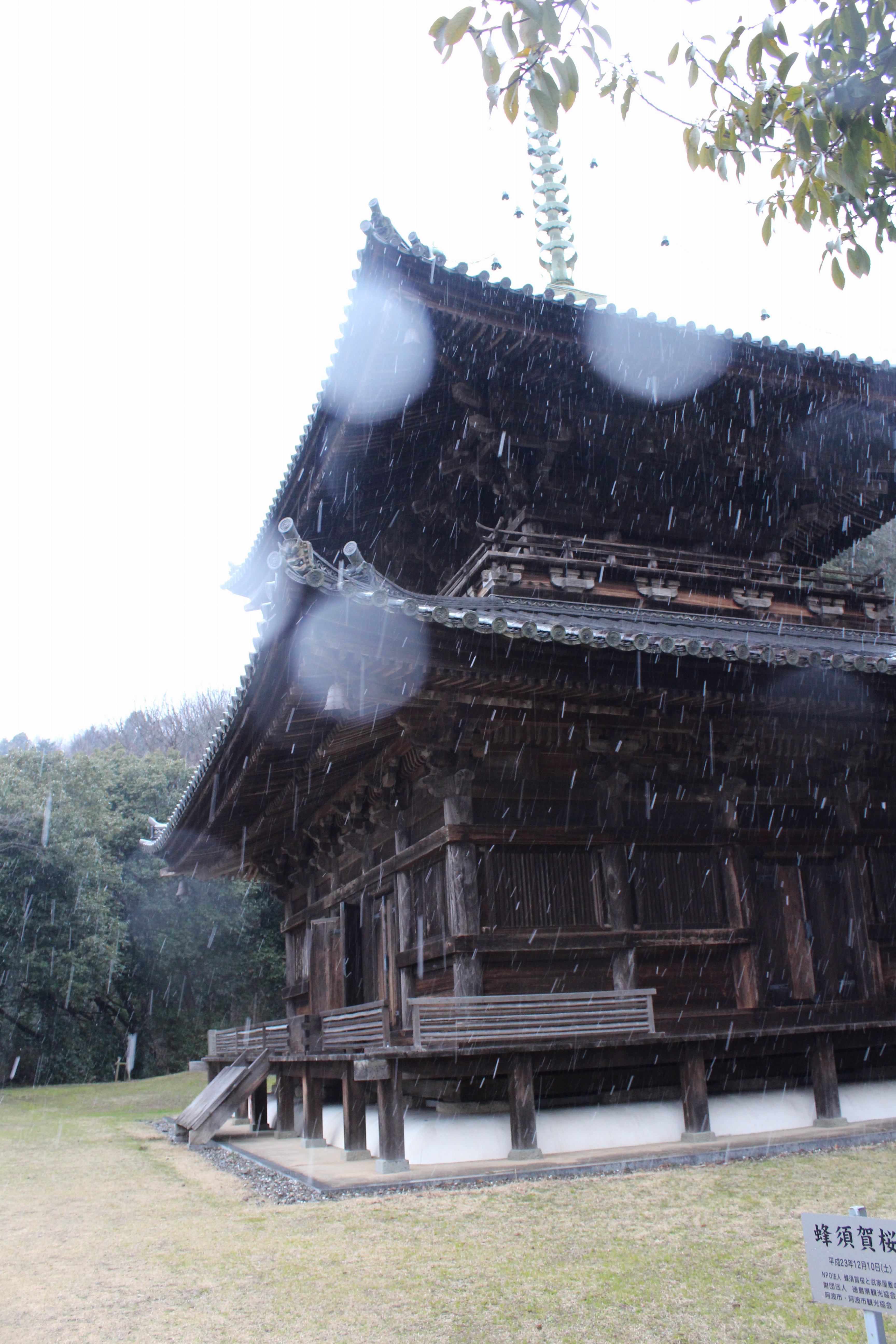Tokushima Prefecture, Place of Spiritual Awakening, Temples 1 – 23
The start of my pilgrimage at Ryōzenji (temple 1 – 11)
Although my Japanese friends were with me at the start of my pilgrimage (they left after temple 12), the start was not easy for me. I felt totally overwhelmed by just everything – the language I did not know, the customs, the rituals, the path I had to find, the food. Major doubts about my decision to walk the way entered my mind. I had no idea how I could meet all these challenges.
I started at Ryōzenji, temple 1, like most of the pilgrims do. At the shop, I bought all the things I needed for the pilgrimage as an Ohenro.
View into the pilgrim’s shop of Ryōzenji
Before entering the shop, everybody had to take off the street shoes. On the stand hang many kinds of rosaries (juzu). I bought a brown one. I also bought nameslips (osame-fuda) and a sedge hat (sugegasa) with the Sanskrit letter A on it; A, as the mother of all sounds, signifies the vow to attain enlightenment.
There were many white vests (hakui and oizuru) and pilgrim’s books (nōkyōchō) to choose from. White not only represents purity and innocence but also the acceptance that one could die any time on the pilgrimage (as clothing the dead).
Also, there were different staffs (kongōzue) to buy. It is said that the staff is the embodiment of Kūkai, also known as Kōbō Daishi, who walks with the pilgrim all the time and protects him. On the staff is the inscription “Namu Daishi Henjo Kongo” which means “I take refuge in Daishi, All Illuminating Indestructible (Compassion/Wisdom), thus We two – pilgrims together.”
There were also different colored stole (wagesa, lit. ring kesa: kashaya robe, decayed color robe of the aspirants, pilgrims) to buy. Normally, it is an attire for priests only.
Shigeo and I as Ohenros
Entrance gate of Ryōzenji, temple Nr. 1. Before entering the sacred area of a temple, the pilgrim has to bow in gassho (hands in praying position) in front of the gate.
Daishi Hall of Ryōzenji, the temple where a statue of Kōbō Daishi resides
Stamp received in the office of Gokurakuji, temple Nr. 2. When I came back to the temple at the end of my pilgrimage, finishing the circle, I got another set of stamps. Some pilgrims have walked so often that the entire page is totally red.
Konsenji, temple 3, is famous for the Golden Well. According to a legend, the Konsen (where Konsenji got the name from) is a source of long life.
Detail of the Golden Well. It is said that if you see your face in the reflection, you will live until 92. If not, you will die within 3 years. I did not try it.
A sacred stone at Konsenji. People touch it to get healing for ailments.
Legend tells of a famous warrior’s attendant who was so strong that he could lift this stone in front of the other warriors.
Road to Jizōji, temple 5. This road is typical for the pilgrimage way in this area. The countryside is often urbanized.
Reflecting pond at Anrakuji, temple Nr. 6
When I arrived at Fujiidera, temple 11, it was already after 5 pm. Up to Fujiidera, the distance was about 23 miles. I did not walk all of it, but rode by car to some of the temples. With the coming of the night, heavy snowfall started. I was glad that Yuko and Shigeo were with me. We stayed overnight in a comfortable business hotel.
Fujiidera is one of the few Zen (Rinzai) temples along the route. It is also the first temple south of the Kyu-Yoshino-River (old Yoshino River), a powerful river running through this area.


